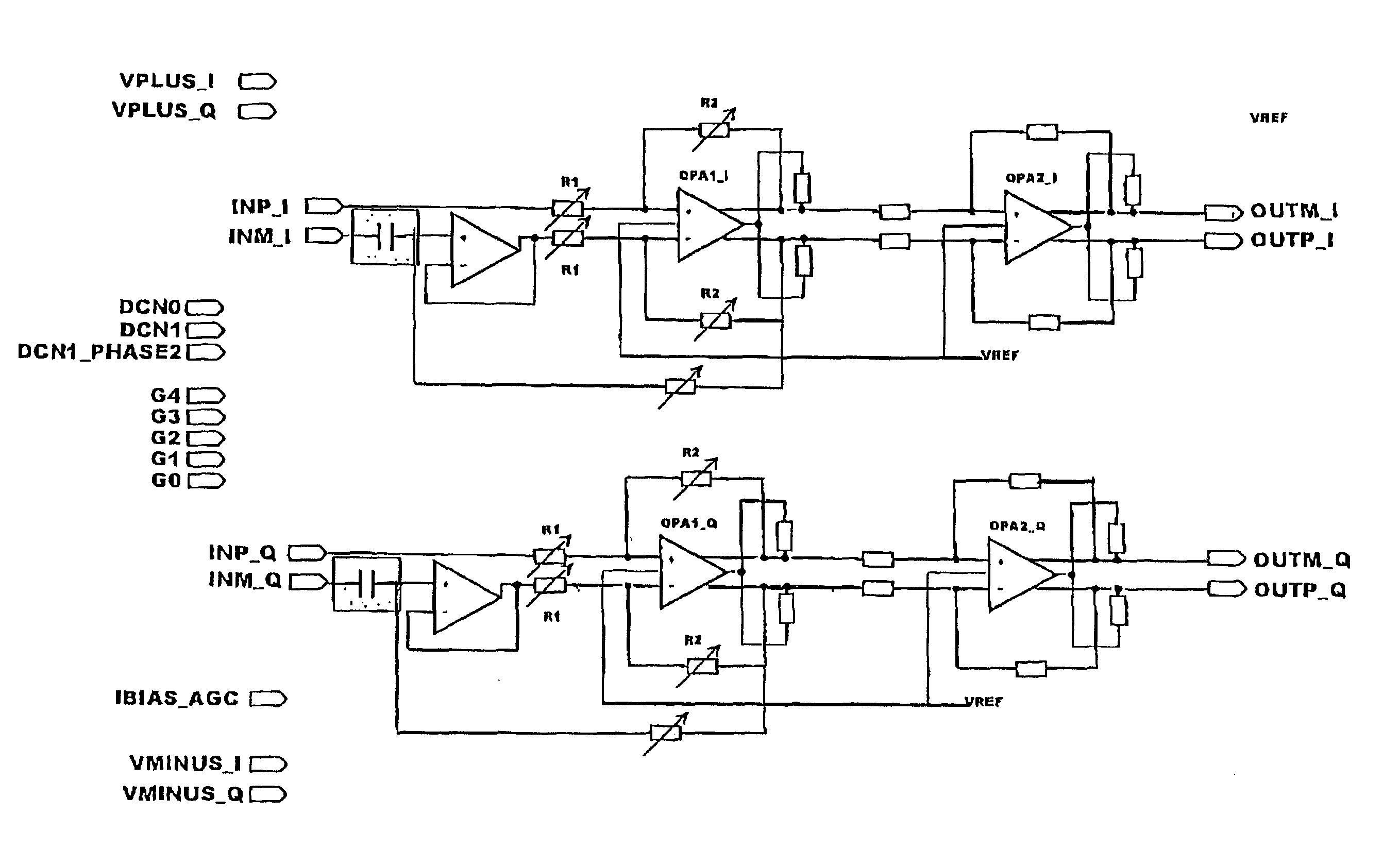Receiver
a receiver and receiver technology, applied in the field of receivers, can solve the problems of large area on the circuit board, inability to fully integrate automatic gain control (agc), and inability to control the so-called offset voltage, etc., and achieve the effect of facilitating the circuit design of the receiver
- Summary
- Abstract
- Description
- Claims
- Application Information
AI Technical Summary
Benefits of technology
Problems solved by technology
Method used
Image
Examples
Embodiment Construction
[0035]A circuit 10 for a receiver embodying a common multimode automatic gain control (AGC) function in accordance with the principles of the present invention is shown in FIG. 4. The circuit is arranged such that the DC level of the output (OUTP_I, OUTP_Q) of the circuit 10 can be fixed regardless of the DC level at the input (INP_I, INP_Q) of the circuit.
[0036]FIG. 5 illustrates a circuit 11 that may be used in the FIG. 4 circuit arrangement 10. The circuit 11 comprises a capacitor C1 and a resistor R1 on signal path between the input Vin and an input 21 of an operational amplifier (opamp) 12. Capacitor C1 and the resistor R1 are for defining the high pass filter function of the circuit 11. More particularly, capacitor C1 is for defining the lowpass cut-off frequency of the circuit. Resistors R1 and a second resistor R2 together define the gain of the circuit 11.
[0037]The operational amplifier 12 is controlled by a reference signal. The reference signal is fed in another input 22 ...
PUM
 Login to View More
Login to View More Abstract
Description
Claims
Application Information
 Login to View More
Login to View More - R&D
- Intellectual Property
- Life Sciences
- Materials
- Tech Scout
- Unparalleled Data Quality
- Higher Quality Content
- 60% Fewer Hallucinations
Browse by: Latest US Patents, China's latest patents, Technical Efficacy Thesaurus, Application Domain, Technology Topic, Popular Technical Reports.
© 2025 PatSnap. All rights reserved.Legal|Privacy policy|Modern Slavery Act Transparency Statement|Sitemap|About US| Contact US: help@patsnap.com



